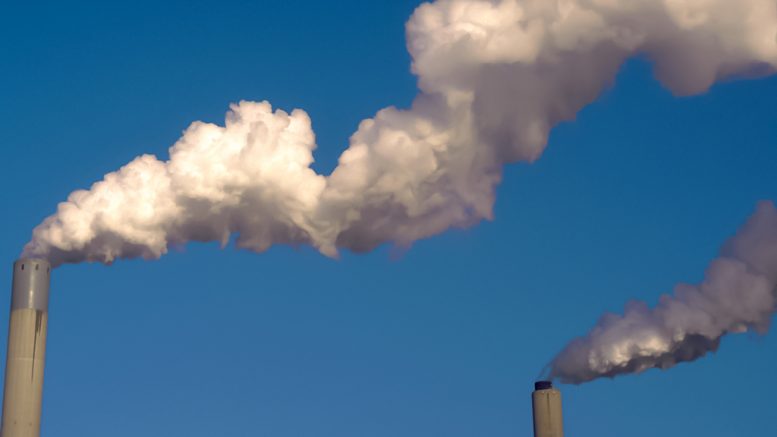While some banks and other lenders are cutting off funding for new coal-fired power plants and turning their backs on coal mining projects more generally, the number of new coal mines proposed or under development is higher than one might think, given all the noise about meeting emissions targets outlined in the Paris Climate Agreement, and the broader shift away from fossil fuels and towards greener forms of energy.
According to Global Energy Monitor in its June report — Deep Trouble: Tracking Global Coal mine proposals — 2,277 million tonnes per year of new coal mining capacity is currently under development, which amounts to almost 30% of the 8,135 million tonnes produced around the world in 2019.
“While three-fourths (1,663 million tonnes per annum) of proposed coal mine capacity is in the early stages of planning and thus vulnerable to cancellation, the remaining quarter (614 million tonnes per annum) of proposed mine capacity is already under construction,” noted the San Francisco-based non-governmental agency (NGO), which catalogs fossil fuel projects worldwide.
“The prospect of a low-carbon transition puts these projects at risk of up to US$91 billion in stranded assets. But if they proceed, without unprecedented cutbacks in global production over the next decade, proposed capacity could boost supply to over four times a 1.5 degree Celsius pathway.”
If all of the proposed coal projects were built, coal production in 2030 “will be over four times the 1.5 degree Celsius pathway,” the report states, “and runs contrary to the IEA’s (International Energy Agency’s) new roadmap for net-zero emissions, which requires no new coal mines or mine extensions beyond 2021, and the findings of the UN (United Nations) and leading research organizations that coal production must decline 11% each year through 2030 to remain consistent with a pathway to 1.5 degrees Celsius.”
The report’s findings were based on a survey of all active coal mine proposals with a capacity of 1 million tonnes per annum or more. (Separately, the NGO also publishes its Global Coal Mine Tracker twice a year (January and July), which provides information on the world’s major coal mines — specifically every operating coal mine producing 3 million tonnes per year or more and every proposed mine with a capacity of 1 million tonnes a year or more.
While not surprising, the report found that three-fourths of the new mine development (77% or 1,750 million tonnes per year) is in China, Australia, India and Russia. Breaking that down further, coal mine capacity under construction in China is 452 million tonnes per year (157 million tonnes per year is planned). In Australia, 31 million tonnes per year is being built (435 million tonnes per year is planned); in Russia, 59 million tonnes per year is under construction (240 million tonnes per year is planned); and in India, 13 million tonnes per year is under construction (363 million tonnes per year is planned).
In addition, in China and India, most of the proposed coal mines “are sponsored by state-owned enterprises wholly or partially owned by the government, meaning taxpayer money continues to subsidize mine projects to fuel province and state economies.”
In terms of companies, the report points out, “the world’s largest energy conglomerates such as Glencore, Mechel, and BHP still remain invested in new mines and mine expansions,” although “small and independent firms have shown the greatest appetites for new projects, especially in Australia and Russia.”
What’s more, almost two-thirds of the proposals for new coal mines are “greenfield” developments, according to the report, “signalling the industry’s willingness to break ground on new mines that tend to lock-in more long-term production and more future emissions than existing mines.”
Finally, “the median size for a new coal proposal is 3.5 million tonnes per annum,” the report calculates, and “emissions from coal mine projects now on the drawing board would total between 5,000 and 5,800 million tonnes of carbon dioxide equivalent (C02e) each year from combustion and methane leakage,” would be “comparable to the current annual Co2 emissions of the United States (5,100 Mt).”
Ultimately, the road map for pushing coal to the curb is far from clear.
Late last month, China and a number of other countries at the G-20 meetings in Italy opposed plans to phase out coal use, and at the G7 summit in June, leaders of the group of seven nations vowed to cut their emissions in half by 2030 and stop international funding for coal projects that don’t have the technology to capture and store carbon dioxide emissions, but failed to agree on a date to end the use of burning coal. Earlier this month, Beijing’s National Development and Reform Commission authorized the restart of 15 coal mines in China’s northern provinces, and an additional 38 coal mines in the Inner Mongolia region.


Be the first to comment on "Curb your enthusiasm: No end in sight for burning coal"